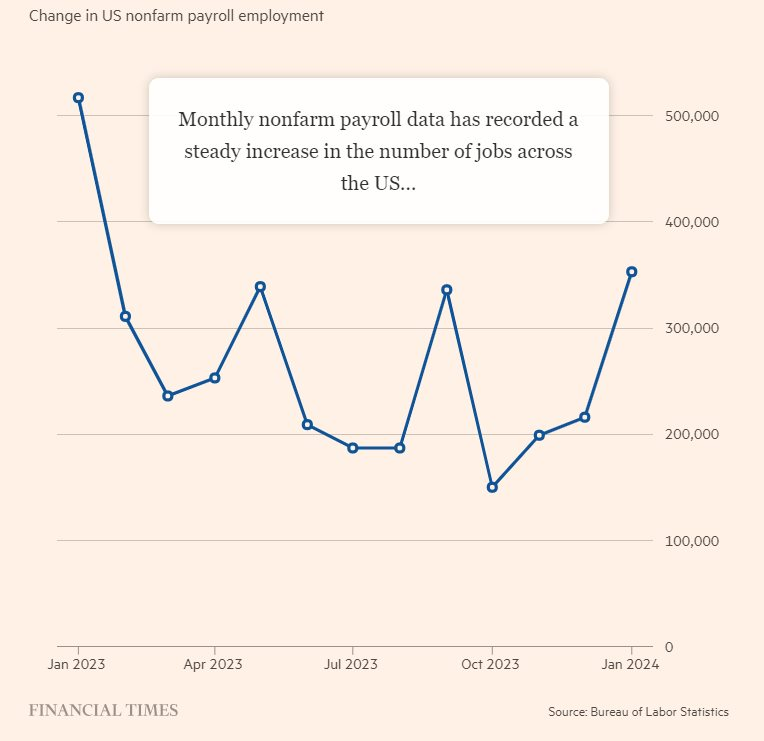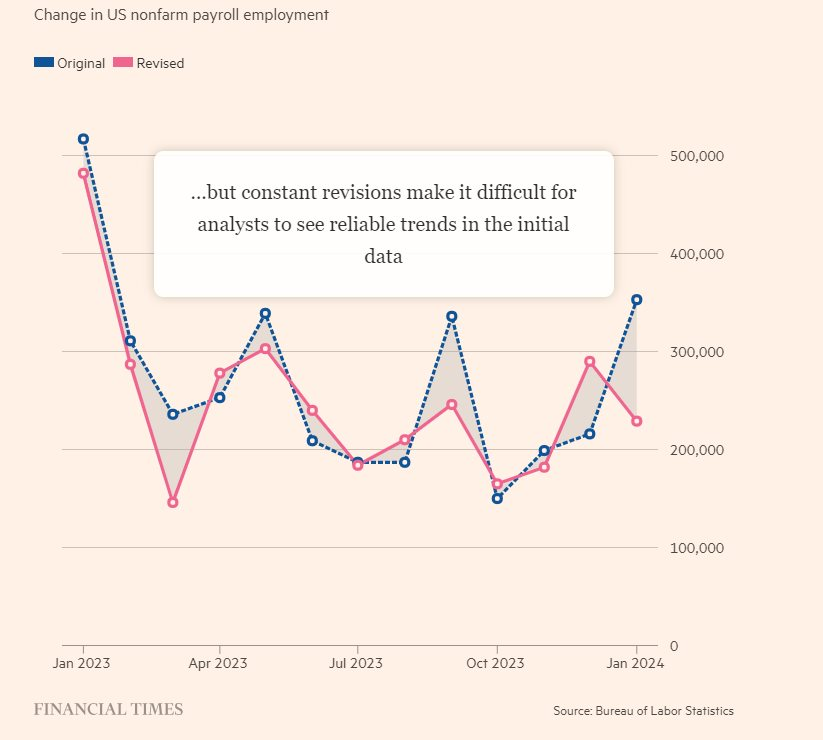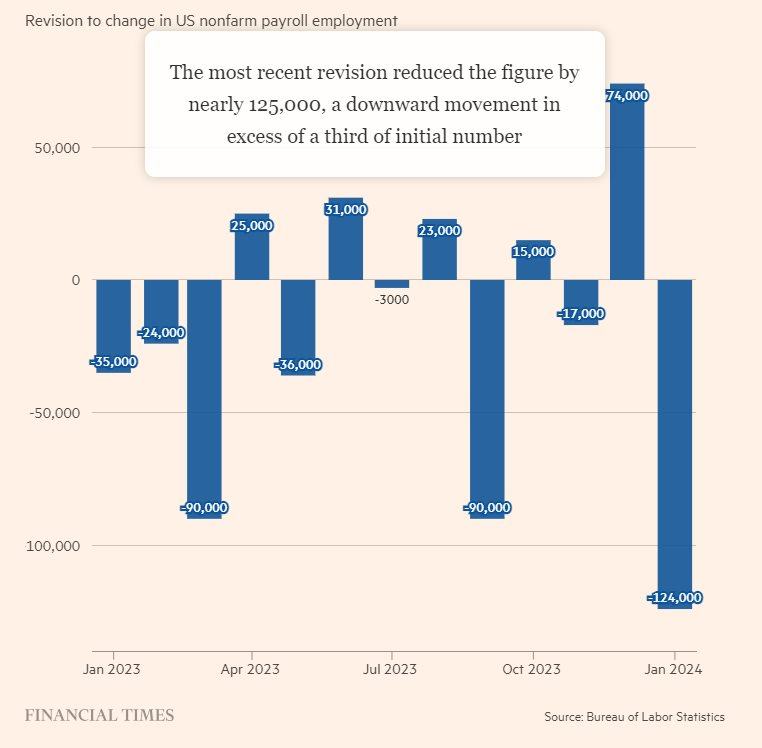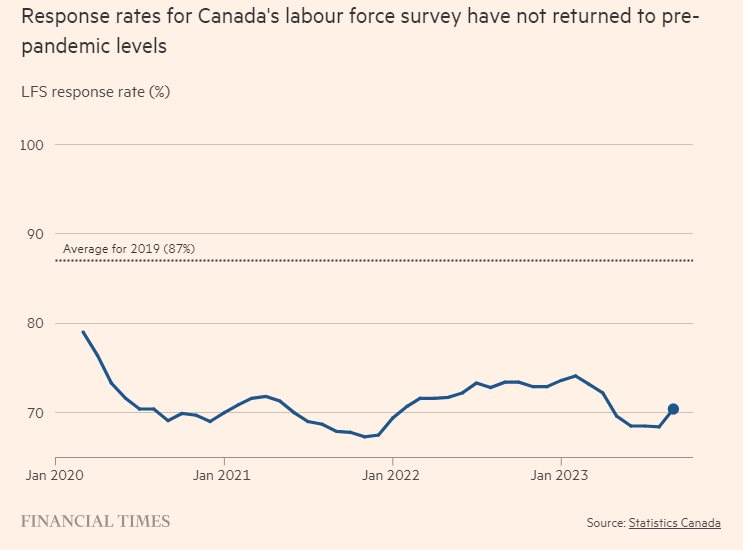The Challenges of Collecting and Interpreting Employment Data
By Business Today

Employment data is crucial for central banks worldwide to determine the appropriate timing for interest rate cuts. However, there is an important issue to note – this data is not consistent. The changes in immigration, significant fluctuations in post-Covid-19 working conditions, and lower participation rates in surveys are all coming together and hindering labor market data statisticians, according to Financial Times (FT).
Economists are increasingly questioning whether they can rely on official reports to make accurate labor market predictions. The United States, for example, has revised its non-farm payroll (NFP) data seven times since the beginning of 2023. The employment data for January this year, described as a “surprisingly strong” increase, saw a decrease of 124,000 jobs in the following month, and a more modest 229,000 jobs. The final figure for January will be released this Friday – along with the preliminary estimate of March’s employment data.
These inconsistencies and discrepancies have left rate setters and some economists struggling to assess whether the country’s “hot” labor market has cooled enough to consider interest rate cuts or not. Jason Furman, a professor at Harvard University, mentioned that when people see non-farm payroll data, they often have the psychology that they will eventually be adjusted.

The difference and inconsistency have made it difficult for policymakers to evaluate whether the labor market data is reliable enough to base interest rate decisions on. In the United States, concerns about the reliability of labor market surveys have been raised due to differences between the Bureau of Labor Statistics (BLS) NFP and their household surveys. Jared Bernstein, an economic adviser to the White House, stated that while the quality of US labor market data is still “high” and the BLS has done “very good work,” whether the data accurately reflects the increase in immigration is “a really important thing to think about.”
This issue is not confined to the United States. Other countries are also facing data challenges. In the UK, the Office for National Statistics (ONS) has been unable to publish official unemployment rates for several months. The low response rate to their labor force surveys has rendered them unreliable. The ONS also cautioned against “patching” the data, as it could complicate decisions on interest rate policies and minimum wage levels, making it difficult for local officials and national policy makers to make informed choices. The European Union has also seen a decline in response rates to their labor force survey.

In Canada, the statistical office has struggled to maintain response rates for their labor force survey following the decline caused by Covid, although Statcan believes their survey still provides a reliable picture.
Sally Anderson from the BLS Current Employment Statistics (CES) program, responsible for compiling NFP survey data, believes the prolonged decrease in response rates is due to survey fatigue. Anderson stated, “Today, when you go shopping, they have your email address, and you’ll be surveyed before you’ve even left the store. So we’re competing with all of those things.”

Some statistical agencies have implemented measures to encourage more responses. ONS has tried giving out free gifts and £10 shopping vouchers, closely monitoring non-respondents, and providing shorter questionnaires. They plan to transition to online surveys later this year. However, BLS stated that such incentives would significantly increase costs. Chris Manning, the Director of the CES program, said, “We’re operating under budget constraints, and offering incentives would not be feasible within the budget.”
Another approach is mandatory completion of questionnaires, which some countries, including France and Canada, have implemented. In the US, only four out of 50 states enforce mandatory government surveys. A recent independent report suggests that the UK may consider making labor force surveys mandatory.
However, in France, where the country conducted a review of their labor force survey in 2021, they found that the legal requirement is unenforceable, and the €38 penalty for non-compliance is unlikely to persuade non-respondents.
The ultimate goal of many statistical agencies is to shift towards data based on large government datasets and other digital data, where surveys play a smaller role than before. Denise Lievesley, the head of the UK Statistics Authority (UKSA) review, stated that all OECD statistical agencies consider this necessary due to “decreasing response rates to regular surveys, increasing demand for rapid data, and pressures on regional public budgets.”
However, Lievesley acknowledges that IT systems are somewhat outdated, and concerns about privacy have complicated the task. Agencies also note that surveys may still be the only way to answer some truly important questions.
Timeliness is also a concern for the NFP, which is usually released on the first Friday of each month, just a few days after the period it measures.
In addition, economists and policymakers in the UK and US are making every effort to gain a comprehensive view of the labor market by considering a broader range of surveys and alternative data.
References: FT

